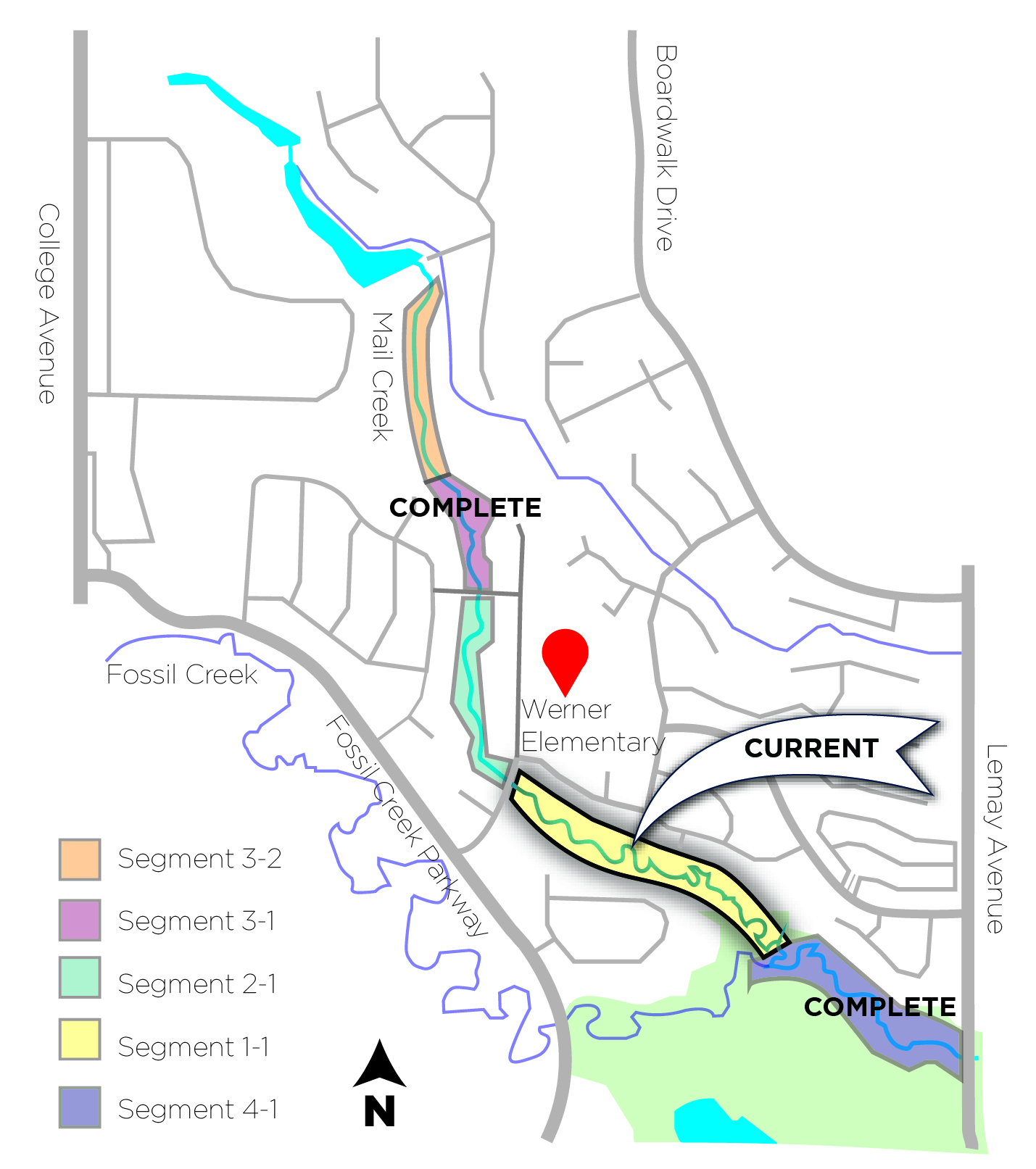As a part of the Mail Creek Stream Rehabilitation Project, contractors discovered buried abandoned building materials that contain contaminants.
Mail Creek Stream Rehabilitation Project#
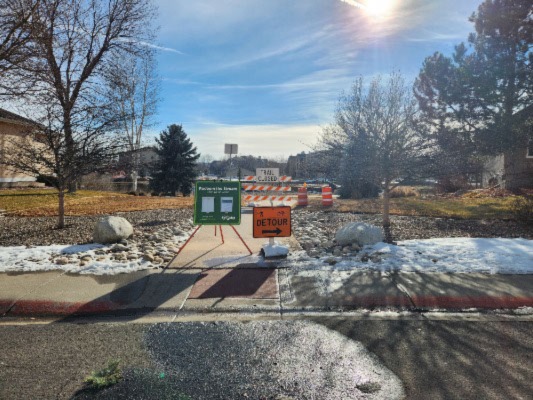
Detour and informational signage at Mail Creek trail closure
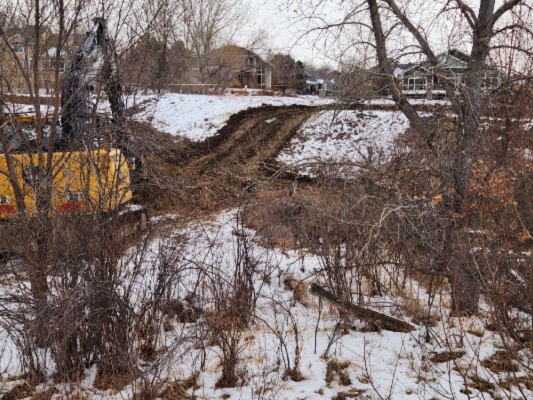
Channel regrading and debris removal at Mail Creek
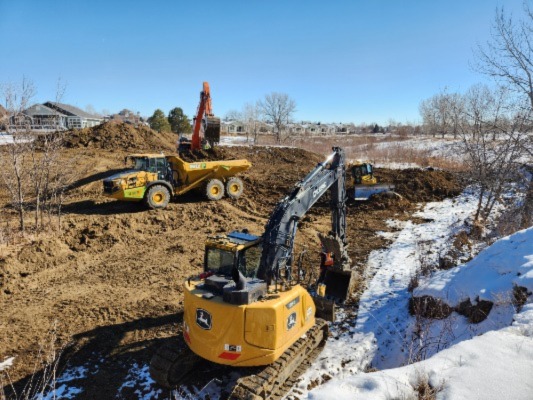
Earth berm building and topsoil stripping
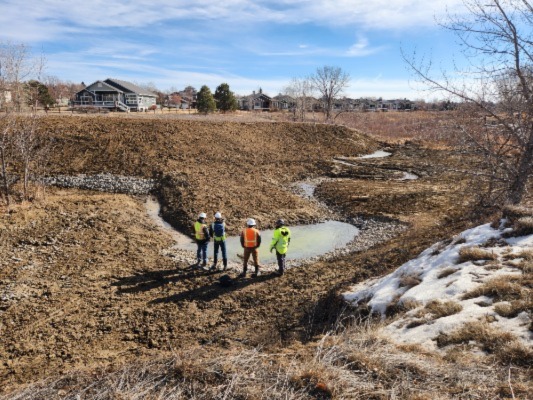
Evaluation of channel path and changes needed to mitigate future erosion
-
Overview#
In the first eight weeks of construction, the project remains on schedule. Recent severe cold weather has caused construction efforts to slow down. Traffic control and site safety fencing has been installed. The section of paved trail and the bridge that crosses over Mail Creek is closed. A detour route has been established around the site using detour signs and project information flyers. The project team continues to observe and maintain safety for crews and the traveling public. Crews continue to work at the east end of the project, from the confluence of Mail Creek and Fossil Creek (near the Fossil Creek Community Park) toward the west end of the project.
Progress to Date#
- Equipment mobilized to the site
- Construction access roadway is complete
- Mail Creek dewatering system has been installed
- Topsoil stripping and stockpiling (80% complete)
- 650 feet of channel grading complete (25%)
- Installation of instream wood habitat structures is complete
What to Expect Next#
- Mail Creek channel grading and shaping (1,800 feet)
- Installation of instream riffles and pools
- Earth berm building and shaping in the flat upland areas
- Willow plantings
- Erosion matting installation along upper stream banks
- Seeding
- Traffic control adjustments and trail closures will continue
- Continuing to maintain safety for crews and the traveling public
Quick Facts#
Where
Mail Creek from Mail Creek Lane through Two Creeks Natural Area and the confluence of Fossil Creek.
Goals
- Improve environmental, social and economic health of watersheds in Fort Collins
- Create sustainable aquatic, riparian and terrestrial habitat within city streams
- Improve connectivity throughout each basin
- Improve water quality within urban streams
- Integrate stream improvements into existing City master plans, e.g., Land Use, Natural Areas, Parks
Timeline
2021 - Planning and Design - complete
2022 - Construction begins Winter 2023
2023 - Revegetation and planting
2024-2026 - Established growth & revegetation
Project Flyer#
Overview#
Stream rehabilitation projects repair areas of streams where the ecology, safety, structure and water quality have changed over time. The Mail Creek Project will reshape and stabilize the eroding banks along a specific section of Mail Creek to improve safety and habitat.
Project Details#
The base project includes stream stabilization and rehabilitation only. To correct erosion and water quality problems, stream banks will be regraded and reinforced with natural materials to prevent further erosion. The rebuilt slopes will be planted with native plants, trees and grasses to provide new aquatic and riparian habitat for fish and wildlife. The stream channel will be slightly relocated in select areas to prevent further movement. Careful assessment and consideration was taken to preserve many trees and some existing vegetated areas.
Background#
In 2012, staff and City Council prioritized several Stormwater projects based on public safety, water quality and other concerns. The Multi-Criteria Decision Matrix identified top-ranked stream restoration projects including:
- Fossil Creek upstream of Lemay Avenue through Fossil Creek Park (completed in 2015)
- Spring Creek through Edora Park (completed in 2019)
- Mail Creek at Meadow Passway Drive (construction completed March 2020, revegetation stage ongoing).
Construction#
Funding for construction was approved in the City's BFO budget cycle. Construction is projected to begin on schedule in January 2023 and be completed in the spring of 2023.
Example: Fossil Creek Segment 4-1 Restoration


What to Expect During Construction#
Residents and community members can expect to see construction activities in the vicinity of the project and stream bed area for several months. Construction equipment, specifically trucks and trailers, will periodically be on the local neighborhood streets as they deliver materials and haul debris from the project site. Traffic control signs and detour routes will be posted as needed for the safety of drivers, pedestrians and trail users.
Did You Know?
In warm seasons at night (when temperatures are cooler), open windows when you feel comfortable doing so (i.e. in calm weather condition, with a window stopper in place, during clean air days, etc).
Installing ENERGY STAR® roofing material with high reflectance can reduce cooling load.
Installing occupancy sensors where lights frequently are left on when no one is present can help save money and energy.

